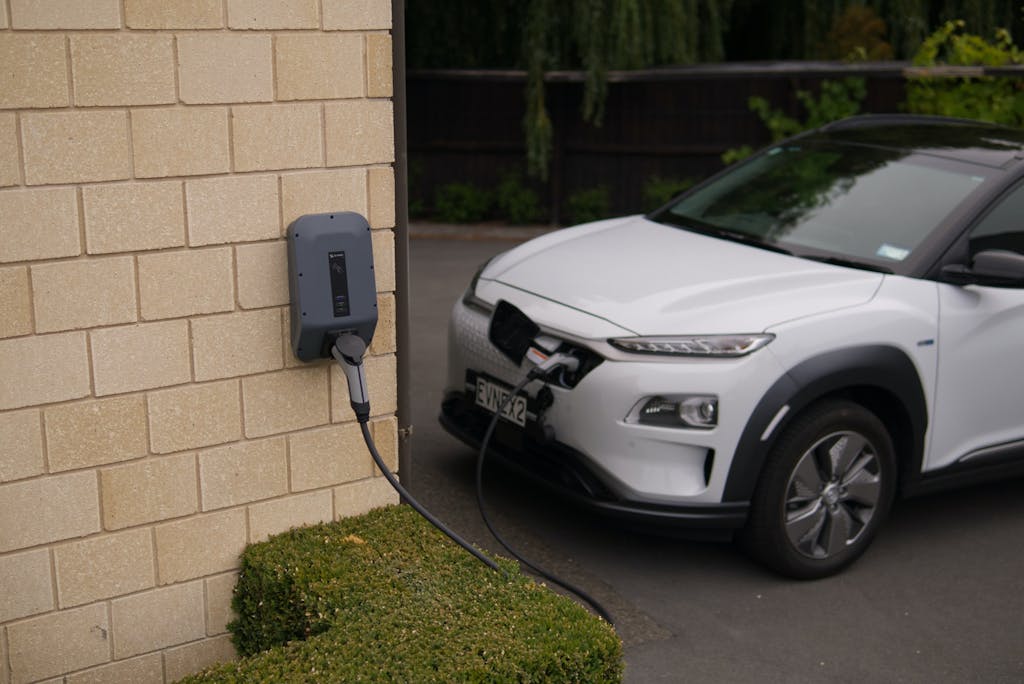All eyes are on the Biden administration as it prepares to announce its new 2030 greenhouse gas emissions reduction target ahead of convening world leaders around Earth Day on April 22-23. Its Leaders Summit on Climate aims to galvanize efforts by the world’s major economies and other key actors to limit global warming to less than 1.5℃. Following the U.S. reentry into the Paris Agreement in February, the new climate goal, or nationally determined contribution (NDC), will shape U.S. economic, foreign policy, and environmental trajectory for the next decade and will have far-reaching implications for climate action globally.
As the date of the Leaders Summit on Climate approaches, Washington has focused on the level of ambition that the new target would set. Specifically, the conversation has crystalized around whether the new greenhouse gas emissions target for the U.S. will be more or less than a 50% reduction from the 2005 baseline.
Changed politics allow the U.S. to reach for deeper emissions cuts
Only a few short months ago, a 50% reduction goal — or any goal, for that matter — was off the table, after President Trump pulled the United States out of the Paris Agreement last year.
Since taking office in January, however, President Biden has made climate change one of four organizing principles of his administration, along with economic recovery, combating COVID-19, and racial justice. He has repeatedly emphasized that climate change is the “number one issue facing humanity” and that it is our “moral obligation” to act on it.
Having signed a $1.9 trillion coronavirus package last month that contained a number of pro-climate elements — such as reducing air pollution and environmental health risks in low-income and marginalized communities — President Biden traveled to Pittsburgh on March 31 to announce a $2 trillion climate-focused jobs and infrastructure plan. With plans to deploy more renewable energy, increase energy efficiency in buildings, and build new electric vehicle charging stations, the legislative proposal would prove transformational for the transition to a low-carbon economy.
Taken together, robust climate action across the executive branch and the prospect of a massive climate-friendly infrastructure package would be a decisive down payment to achieve significant emissions reductions over the coming decade.

Cutting U.S. emissions by half
Of course, achieving a 50% reduction of emissions by 2030 would be a significant achievement. While it is true that U.S. emissions in 2020 were 21.5% below 2005 levels — seemingly putting the country on track to meet the U.S. commitment in the Paris Agreement to reduce the nation’s emissions 26-28% below 2005 levels by 2025 — that is largely attributable to a sudden drop in economic activity last year associated with the COVID-19 pandemic rather than to having the right policies in place. Thus, it will require a great deal of new climate policy and action if the United States is to achieve almost an additional 30% emission reduction over the coming decade with the economy once again growing.
The good news is that several recent analyses suggest that a 50% cut in emissions is not only feasible but would also be catalytic for job creation and economic growth. By one estimate, an emissions reduction target that is in line with the Paris Agreement’s 1.5℃ temperature rise goal could increase economic output in the U.S. by almost $500 billion per year and create more than 3 million jobs by 2030. Critically, it would also be in line with efforts to hold global warming below 1.5℃ and achieve net-zero global emissions no later than 2050 — a long-term target Biden has set.
Prominent civil society organizations have been calling for a 2030 U.S. target of at least 50%, with some arguing that the fair share of global reductions by the U.S. requires that its NDC be in the 70% range. A coalition of several hundred U.S. governors, mayors, and other nonfederal government officials is calling for the Biden administration to reduce the country’s emissions by at least half this decade. And several hundred companies and investors are organizing a call for enhanced climate action and a strong 2030 target.
Jump-starting ambitious global climate action
The reemergence of the U.S. as a global climate leader can be a game changer in the fight against climate change. A bold U.S. 2030 target would send a powerful signal to the world — and would be a rallying point for greater ambition by other countries.
Many governments have already formally submitted new or enhanced 2030 NDCs to the UN Framework Convention on Climate Change. In December the European Union finalized an impressive new goal of reducing the bloc’s emissions by at least 55% below 1990 by 2030. Similarly, the United Kingdom, which is hosting the UN climate summit that will receive NDCs later this year, committed to a remarkable 68% cut.
A number of developing and least developed economies have also already made noteworthy commitments, especially when considering their negligible contributions to the climate crisis. The Marshall Islands, for example, submitted a new NDC almost two years ahead of other countries, both to demonstrate leadership and to highlight the existential nature of climate ambition for poorer countries. Several Latin American countries, including Argentina, Chile, Colombia, and Peru, should also be applauded for raising their ambition to 2030.

In contrast, outside of the EU and UK, the largest emitters still have work to do. Foremost in that group is China, the world’s largest greenhouse gas emitter. While committing last fall to reach carbon neutrality by 2060, Beijing hasn’t yet submitted a 2030 NDC and failed to signal a decisive shift away from fossil fuels in the recent announcement of its next five-year plan.
While India, the world’s third-largest emitter after China and the United States, has submitted an NDC that the Climate Action Tracker considers “2℃ compatible,” the country will need to redouble its efforts to achieve it. The U.S. is in talks with India to collaborate on financing solar deployment at a massive scale, and a net-zero target for India is being actively debated in Delhi.
Japan and South Korea, the fifth- and eighth-largest emitters respectively, announced long-term net-zero goals and released 2030 NDCs, but the latter does not yet put them on a pathway to the former. That said, both countries indicated their intention to announce more ambitious NDCs and to end external coal financing, leaving China as the sole country providing public subsidies for coal-fired power plants abroad.
Brazil, Russia, and Australia stand out as significant emitters with much more work to do. Brazil, which stores vast reserves of carbon in the Amazon forest, recently submitted an NDC that effectively weakens its previous climate goals. With a continued focus on fossil fuel development and consumption in its 2035 Energy Strategy, Russia’s climate plans have also been deemed as critically insufficient. And although Australian Prime Minister Scott Morrison has signaled his intention to embrace a mid-century carbon neutrality goal, the country has yet to submit an enhanced 2030 plan. All three will be watching what the U.S. does and will be increasingly isolated if they do not ratchet up their climate commitments.
The road ahead
Between the U.S.-convened Leaders Summit on Climate in April and the UK-hosted UN climate COP in Glasgow in November — which, among other things, will serve as the deadline for countries to increase their 2030 climate goals under the Paris Agreement — 2021 presents a number of opportunities for countries to ramp up their climate action and ambition. These include:
- The G7 and G20 processes — led by the United Kingdom and Italy — will focus heavily on tackling climate change throughout the year and at leader-level summits in June and October.
- The opening of the UN General Assembly in September — also Climate Week — which will feature a Food Systems Summit and a High-level Dialogue on Energy — both of which will be critical opportunities to align food and energy systems with our climate goals.
- The Convention on Biological Diversity COP in Kunming, China, in October, where governments are set to finalize negotiations on new global 2030 targets that are largely synergistic with climate priorities.
UN Secretary-General António Guterres captured the moment perfectly in a recent statement on climate change: “The major emitters must step up with much more ambitious emissions reductions targets for 2030 in their Nationally Determined Contributions well before the November UN Climate Conference in Glasgow. . . . Decision-makers must walk the talk. Long-term commitments must be matched by immediate actions to launch the decade of transformation that people and planet so desperately need.”
In the coming weeks, with the release of an ambitious 2030 NDC, the U.S. has the opportunity to do just that — and in the process to demonstrate once again its global leadership on climate change.
Featured Photo: Zbynek Burival/ Unsplash



 View All Blog Posts
View All Blog Posts

